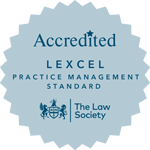Making a solicitors negligence claim
In this instalment of Emma Slade’s entertaining professional negligence blog, Emma looks at a solicitors negligence case that didn’t end well for the claimant. If you would like Emma to assess the merits of your solicitors negligence claim to ensure that you do not encounter similar problems then contact us for a free review. Call us on 0333 888 0403 or email us at [email protected] for a FREE case assessment and details of No Win, No Fee funding.
I used to watch Laurel & Hardy re-runs as a kid. Those black and white movies featuring the hilarious comic duo, made so much better as you could easily foresee what disaster was going to befall them. “The Music Box” was a particular favourite, with the pair trying to deliver an expensive piano up a large flight of stairs in yet another slapstick adventure. You just know the piano is going to fall back down the stairs and you are pretty sure there is an easier way to get the gift delivered to the premises. It is that sort of premonition I had when reading about the solicitors negligence case of Khanty-Mansiysk Recoveries Ltd –v- Forsters LLP which has recently been decided by the Court of Appeal.
I literally winced when I started reading the case. So much so that I had to go back and get a copy of the High Court judgment as well just to see if it was as obvious as I was seeing it.
Forsters LLP (F), a firm of solicitors, were instructed by a company, Irtysh Petroleum plc (Ir) in relation to the purchase of shares in a Russian company which had an oil exploration licence in the Khanty-Mansiysk region of Russia. Between January 2007 and June 2010, F acted for Ir in the transaction and ultimately sent Ir an invoice for “professional services” for the period “January 2007 to June 2010”. Ir did not pay the invoice as it disputed the amount charged. F eventually issued proceedings against Ir and one of its directors who had given a personal guarantee for the costs. Ir entered into negotiations with F whereby an agreement was entered into.
It was the terms of the agreement that led to my Laurel & Hardy moment. Here are the main ones:
“2.1 This Agreement and the terms set out herein shall be in full and final settlement of all or any Claims which the Parties have, or could have had, against each other (whether in existence now or coming into existence at some time in the future, and whether or not in the contemplation of the Parties on the date hereof)… “
“Claims” was defined as follows:
“… any claim, potential claim, counterclaim, potential counterclaim… whether known or unknown, suspected or unsuspected, however and whenever arising in whatever capacity or jurisdiction, whether or not such claims are within the contemplation of the Parties at the time of this Agreement arising out of or in connection with the Action or the invoice dated 1 July 2010 addressed to [Irtysh] by [Forsters] and referred to in the Action”.
Please tell me you can see what is coming! In 2015, Ir went into liquidation and KMR bought Ir’s claims against F from the liquidators. KMR then brought a solicitors negligence case against F as it turned out that F had apparently failed to ensure that, when Ir purchased shares in the Russian company, there was no enforceable obligation on the seller to transfer the shares to Ir and the shares had never actually been transferred to Ir! The damages claimed were in excess of £70M. F immediately referred to the settlement agreement and said that KMR could not sue them. Even though no-one had realised F had been negligent at the time of entering the agreement; the definition of Claims included all those “whether known or unknown, suspected or unsuspected”.
KMR tried relying on BCCI –v- Ali . I don’t want to ramble on too much but it is worth looking at. In brief, Mr Ali had entered into a compromise agreement with BCCI following redundancy. A year later, BCCI went into liquidation as a result of corrupt management, such corruption stigmatising former employees in finding new employment. In 1998, the House of Lords decided that a claim for “stigma damages” was a legally permissible claim, albeit not previously seen in English law. Mr Ali wanted to claim “stigma damages” even though his compromise agreement stated that no claims could be brought. In that case, the Court decided that it “should be very slow to infer that a party intended to surrender rights and claims of which he was unaware and could not have been aware”. As “stigma damages” were a new phenomenon, it couldn’t have been in the parties contemplation at the time of the agreement, so Mr Ali wasn’t bound by it.
However, when it came to this case, both the High Court and Court of Appeal disagreed with KMR’s argument that Ali applied. Whilst the compromise agreement between F and Ir dealt with the issue of F’s fees, it was clearly intended to go a lot further than that as it specifically referred to “unknown” claims and those “not in the contemplation” of the parties. It was a clause that had been drafted very widely and, unlike Ali, a claim for professional negligence is not a new area of law that could not have been known about at the time.
So the solicitors negligence case was thrown out and I am truly not surprised. As far as I can see, the settlement agreement was absolutely clear: Ir could not sue F for anything that they may or may not have done between “January 2007 to June 2010”. What I can’t understand though is the thinking behind such a wide clause. Surely someone could have foreseen this to be a problem and specifically excluded negligence? Clearly not. But then we get to the ironic part. KMR aren’t going to be able to sue the solicitors who drafted the agreement for Ir. As I mentioned above, Ir are in liquidation and so the right to any such claim vests in the liquidators. KMR had already obtained an assignment of Ir’s claim against F and I suspect they paid a pretty penny to get those rights. Can they afford to do it again? And so, you can understand why I winced at the Laurel & Hardy-esque type scenario as I read those judgments, moreso when I realised the ending. Only one thing to say: “that’s gotta hurt!”


